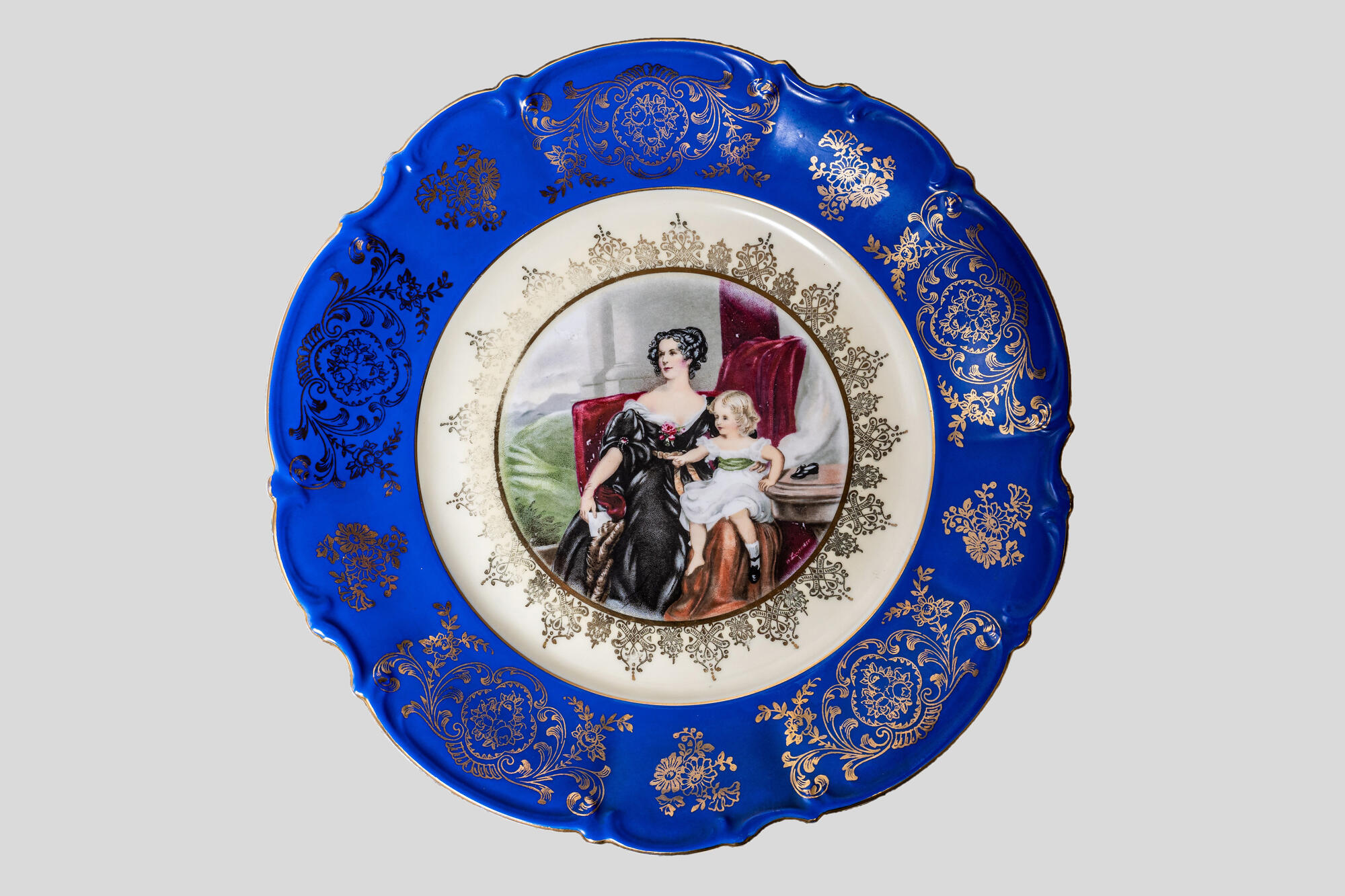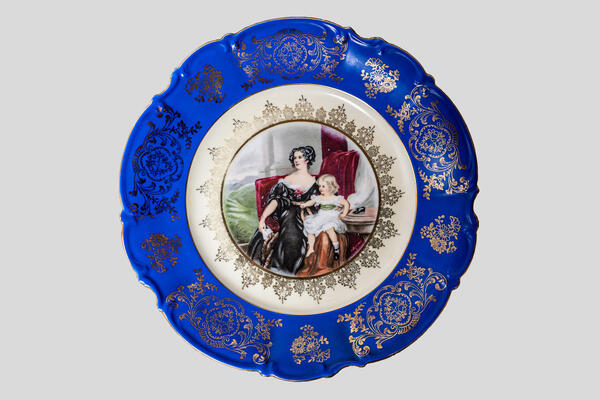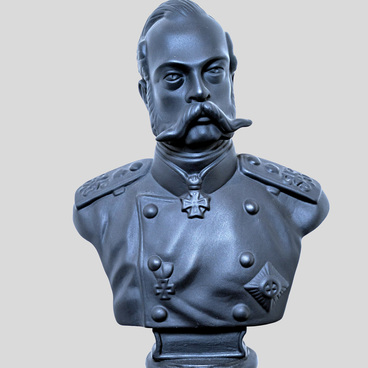The plate is round, regular in shape, the main color is white. The surface is mostly smooth, there is a bas-relief pattern from smoothly curved lines along the edge of the side. At the ends of the lines, elements of plant ornament have been preserved. The side is divided into unequal alternating segments by weakly depressed lines. The joint of the bottom and side is embossed. The bottom of the plate is cream colored. The side is bright blue, decorated with a delicate golden pattern, in which bouquets of flowers and complex vignettes with floral ornaments alternate.
In the center of the plate there is a portrait of a young dark-haired lady sitting in an armchair with a child on her lap. The circumference of the portrait medallion is trimmed with gold layering and decorated with delicate intricate ornamentation combining lines and floral elements.
According to the seller, the lady depicted in the portrait may be Josephine Beauharnais, and the child on her lap may be her son Eugene, whose granddaughter was Princess Eugenia Maksimilianovna of Oldenburg.
Perhaps the author of the portrait, which served as the basis for the image, was the British painter Thomas Lawrence, who became famous as a portrait painter of the Regency era.
Leni Parbus became interested in porcelain in the early 20th century, and for several decades her workshop was the standard of good taste and impeccable workmanship of china. However, it is not always possible to accurately attribute its products by the brand.
Historically, Germany had several centers of porcelain production. About 80 percent of workshops were concentrated in two German states - Thuringia and Bavaria. The remaining 20 percent were distributed mainly between Baden-Württemberg, Saxony and the state of Brandenburg.
In the first quarter of the twentieth century, a lot of German Art Nouveau - Jugendstil porcelain products were produced. But not all German porcelain firms always followed current trends. Rather, it was typical of Bavaria. Porcelain from factories from the Eastern Lands more often gravitated towards historicism throughout the 20th century. Many masters found their own niche and successfully worked in it. Today it is this tableware that is associated in Russia with the concept of “German porcelain”.
In the center of the plate there is a portrait of a young dark-haired lady sitting in an armchair with a child on her lap. The circumference of the portrait medallion is trimmed with gold layering and decorated with delicate intricate ornamentation combining lines and floral elements.
According to the seller, the lady depicted in the portrait may be Josephine Beauharnais, and the child on her lap may be her son Eugene, whose granddaughter was Princess Eugenia Maksimilianovna of Oldenburg.
Perhaps the author of the portrait, which served as the basis for the image, was the British painter Thomas Lawrence, who became famous as a portrait painter of the Regency era.
Leni Parbus became interested in porcelain in the early 20th century, and for several decades her workshop was the standard of good taste and impeccable workmanship of china. However, it is not always possible to accurately attribute its products by the brand.
Historically, Germany had several centers of porcelain production. About 80 percent of workshops were concentrated in two German states - Thuringia and Bavaria. The remaining 20 percent were distributed mainly between Baden-Württemberg, Saxony and the state of Brandenburg.
In the first quarter of the twentieth century, a lot of German Art Nouveau - Jugendstil porcelain products were produced. But not all German porcelain firms always followed current trends. Rather, it was typical of Bavaria. Porcelain from factories from the Eastern Lands more often gravitated towards historicism throughout the 20th century. Many masters found their own niche and successfully worked in it. Today it is this tableware that is associated in Russia with the concept of “German porcelain”.



